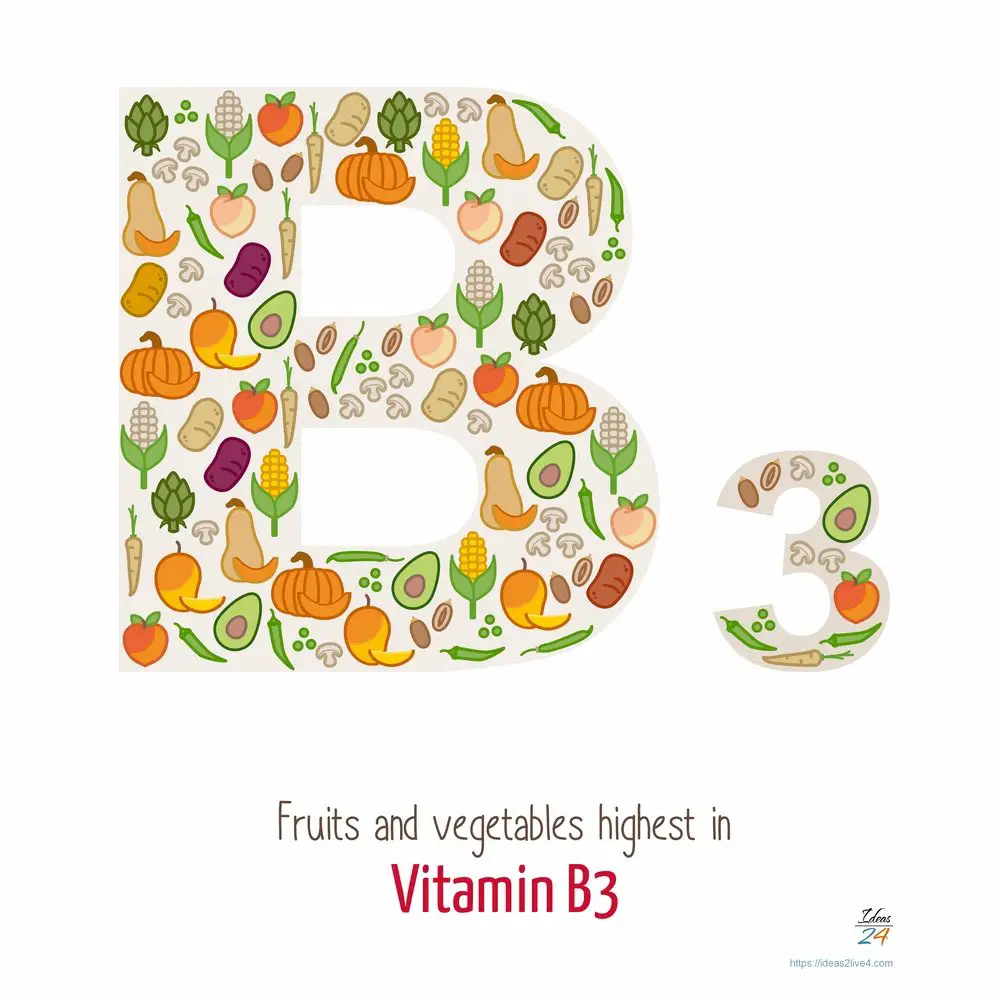There’s a big chance that you know of vitamin B3 by its alternative name, niacin. Niacin is an amino acid that is essential as part of the diet. In fact, vitamin B3 is something you need to get on a daily basis. Here’s a look at all you need to know about the benefits and daily recommendations.
The Basics of Vitamin B3
Niacin is also known as niacinamide. Like other B vitamins, it’s water-soluble, which means that it dissolves in water and is easily passed around the bloodstream. This is also one of the easiest B vitamins for meat eaters to get into their diet, as it’s found in tuna and most meats (including organ meat). For vegetarians and vegans, it’s also found in good amounts in seeds and mushrooms, along with a few other vegetables and plants.

There are three forms of niacin: inositol hexaniacinate, niacinamide, and nicotinic acid. It’s one of the most widely studied B vitamins, with results showing it’s good for cholesterol level balancing, healthy skin, improving the cardiovascular system and even treating (and preventing) diabetes.
Unlike many other B vitamins, there are side effects when you take too much. Some of these include dizziness, low blood pressure, headaches, and other similar side effects. These problems aren’t just associated with getting too much of this vitamin, but can also occur when the vitamin is taken along with certain medications. It’s important to discuss the vitamin with your doctor, especially if you are taking it in a supplement.
Benefits of Niacin
Studies show that getting enough niacin in your body will help to balance your cholesterol levels. It was once believed that all cholesterol was bad, but now researchers have found that good HDL cholesterol can help to protect the arteries and improve blood flow. Niacin doesn’t just promote good cholesterol, but actively lowers the bad cholesterol. Many doctors will prescribe niacin along with statins to help medically control cholesterol.
The cholesterol control helps to promote good heart health. With higher levels of good cholesterol, the arteries are lined with a smooth, protective layer. The blood circulates around the whole body easily, putting less pressure on the heart and whole cardiovascular system. Blood pressure remains normal, avoiding the risk of cardiovascular disease and strokes.
There are studies looking into how vitamin B3 can help to treat Type I diabetes. These studies are still in their early stages, but do look promising. Studies have shown that the vitamin protects the cells that are commonly destroyed by Type I diabetes, helping to prevent it from occurring in at-risk children.
Those who are deficient in B3 can suffer from what is known as “brain fog.” You’re left struggling with your concentration and memory. This ‘fog’ clears quickly with adequate vitamin B3 intake, as the vitamin helps to repair and support the connections within the brain.
When applied directly to the skin, it can help to protect the layers from sun damage. There are some studies that show it could also help to reduce the risk of skin cancer.
Getting Enough Vitamin B3
You can usually get enough of this vitamin through your diet. The average adult will need between 14mg and 16mg, although the exact amount will depend on your health and other medications you’re taking. It’s best to get it through natural forms, focusing on a healthy and balanced diet. If taking medication as well as vitamin supplements, ensure that your doctor is informed as there are high risks of health problems due to too much.
Foods rich in vitamin B3 include:
- all meats but especially turkey
- mushrooms
- peanuts
- tofu
- lentils
- green peas
- avocado, and
- sunflower (safflower) seeds
Are you getting your daily intake of vitamin B3?
You can download and print a large format version of our Vitamin B3 graphic here…
This is one of a series of posts on vitamins starting with vitamin A here…





